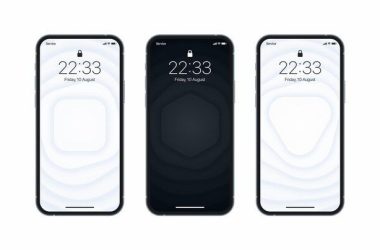With flexible and affordable data plans, excellent domestic coverage, and unparalleled international roaming, Google Fi appeals to many Android and iPhone users alike.
However, there are some key differences when using an iPhone on Google Fi compared to an Android device. In this guide, we’ll explore the main pros and cons of using an iPhone with Google Fi to help you make an informed decision.
The Advantages of Using an iPhone on Google Fi
First and foremost, iPhones work very well on Google Fi these days. Here are some of the main benefits you can enjoy by using an iPhone on Google Fi:
- Excellent domestic talk, text, and data coverage through T-Mobile and U.S. Cellular networks. Your iPhone will function normally for core communication capabilities.
- International data coverage in over 200 countries at no extra cost. This is one of Fi’s biggest advantages, allowing you to use data seamlessly when traveling abroad.
- Data-only SIM cards work perfectly in iPhones, providing extra flexibility. You can use data-only SIMs in tablets, secondary devices, or share your data allowance across multiple devices.
- Affordable family plans and bill protection. Fi’s pricing and features like Bill Protection make it easy to manage costs for individuals, couples, or families.
- Easy to pause or cancel service at any time through the Fi app or website. If you only need service periodically, it’s easy to activate and deactivate.
- Top-notch customer service. Google Fi’s customer service has a strong reputation for being responsive and helpful.
The core aspects of cell service – calling, texting, and mobile data – work as expected on an iPhone with Google Fi. For frequent international travelers or those who want the perks of Google Fi’s unique features, an iPhone can be a great option.
Setting Up Your iPhone on Google Fi
The activation process for iPhones on Google Fi takes a few more steps compared to activating an Android device. Here is an overview of what’s required:
- Insert your Google Fi SIM card into your iPhone. This will be a physical nano SIM for most models, except eSIM-only iPhones like the 14/14 Pro.
- Download the Google Fi app from the App Store. The Fi app is required to finish activation and manage your account.
- Follow the activation prompts in the Fi app to register your iPhone and complete setup.
- Configure the cellular data and MMS settings for your iPhone. The Fi app will walk you through entering the correct APN, MMS configuration, etc.
- You may need to restart your iPhone after activation. Ensure mobile data is enabled in Settings.
As long as you carefully follow the setup instructions, the process is straightforward. The Fi app eliminates much of the complexity that used to be involved with manual network configuration on iPhones.
Key Differences From Using an Android Phone
While iPhones work well on Google Fi these days, there are some feature differences to keep in mind compared to using an Android device:
- Visual voicemail – The native iPhone voicemail app is not supported. You need to use the Google Fi app for visual voicemail.
- Apple Watch cellular service – Google Fi does not currently support using an Apple Watch’s cellular connectivity. You can still use a Watch for notifications over Bluetooth when paired to your iPhone.
- Fewer Google integration features – Naturally, you’ll lose some of the tight Google software integrations like messaging from the web browser.
- No RCS messaging – iPhones don’t support RCS (rich communication services), so you’ll be limited to standard SMS/MMS messaging between iPhones and Android phones.
These limitations are not unexpected, but highlight areas where Google Fi doesn’t yet offer full iPhone feature parity with Android. Functionally, though, iPhones work great for phone calls, texting, and mobile data.
Using an eSIM on Google Fi
Starting with the iPhone XR/XS generation, iPhones have supported eSIM in addition to a physical nano SIM card. All iPhone 13 models and newer are eSIM-only. Here’s what you need to know about using eSIM with Google Fi:
- Activation works the same as with a physical SIM card. You’ll scan a QR code or enter details manually to activate the eSIM through the Fi app.
- Most Fi features work normally with eSIM, including international roaming, data-only SIMs, pausing service, etc.
- You can have one eSIM for your Fi number and one physical SIM from another carrier if desired. Dual SIM dual standby is supported.
- Switching between eSIM and physical SIM is easy without needing to contact support. You can activate and deactivate either SIM as needed.
eSIM support on Fi for iPhone continues to mature. One limitation is that iPhone eSIMs cannot be transferred between devices yet on Fi. But otherwise, eSIM provides maximum flexibility if you need the benefits of dual SIM.
Using iMessage and FaceTime on Google Fi
Since Apple’s iMessage and FaceTime services rely on more than just your wireless number, they work normally when using an iPhone on Google Fi. Here are some key points about using iMessage and FaceTime with your Google Fi iPhone:
- All your existing iMessage and FaceTime contacts will remain in place. You keep full access to both services.
- You can continue messaging other iPhone users via iMessage. Your messages will seamlessly switch between iMessage and SMS.
- Group chats with Android users will revert to MMS. Some features like higher quality photos may be unavailable.
- FaceTime calls to other iPhone users work normally. Android users can join FaceTime calls via web browsers.
- Your phone number will remain your Apple ID for iMessage and FaceTime.
The only limitation is group chats reverting to MMS with Android users. Otherwise, you’ll enjoy the full iMessage and FaceTime experience on your Fi iPhone.
Using Dual SIM Capabilities
One neat feature of newer iPhones is the ability to use Dual SIM thanks to eSIM support. Here are some ways you can take advantage of Dual SIM with Google Fi and an iPhone:
- Use your Fi number as primary and a local data-only SIM when traveling abroad. Enjoy low-cost data without roaming fees.
- Set up Fi as primary and a secondary personal/business line. Keep work and personal lines separate while carrying one iPhone.
- Configure a data-only Fi SIM for additional data and use your main carrier number for calling/texting. Useful for tablets or dual SIM iPads.
Dual SIM unlocks more flexibility. Having a Fi data-only eSIM alongside your primary phone number lets you augment your cellular plan when needed or separate numbers.
Using Your Own iPhone vs. Buying From Google Fi
One question prospective Fi users face is whether to bring their existing iPhone or purchase a new model directly from Fi. Here are some key points on both options:
- You can use any unlocked iPhone on Fi, including older models. As long as it supports LTE, it will work normally.
- Buying from the Fi store ensures network compatibility. But any unlocked iPhone sold in the US also works fine.
- Purchasing through Fi may offer perks like device protection plans or upgrade options.
- The Fi store offers competitive pricing for iPhones, but you can often find deals elsewhere too.
- Using an existing iPhone lets you keep your updates and purchase cycle. Just swap the SIM.
Unless you need a new device, bringing your own iPhone is often the simplest option. But Fi’s store makes it convenient to add AppleCare+ or upgrade iPhones annually if desired.
Traveling Internationally with an iPhone on Google Fi
One of the best reasons to use Google Fi is enjoying seamless connectivity abroad with international data coverage. Here’s what the experience is like traveling overseas with an iPhone on Fi:
- Your iPhone works normally in over 200 countries/territories at no extra cost. Calls, texts, and data all work.
- Data speeds are throttled to 256kbps abroad, but remain unlimited. This is sufficient for basic use.
- You may want to install eSIM data plans in certain countries for higher speeds if needed.
- International calling rates are reasonable. You can monitor usage through the Fi app.
- Fi credits can be purchased if needed for higher data allotments while traveling.
The beauty of Fi is how it “just works” while traveling. You don’t need to hunt for local SIM cards or worry about roaming restrictions. iPhone travel is seamless with Google Fi.
Who Should Consider an iPhone on Google Fi?
Given the pros and cons highlighted so far, here are some of the main user types who may want to consider an iPhone on Google Fi:
- International travelers – Fi’s seamless overseas coverage alone may be worth using an iPhone. Frequent flyers will appreciate this perk.
- Existing iPhone owners – If you already have an iPhone but want to try Fi, you can easily bring your own device.
- iPhone households – Families with multiple iPhones can benefit from Fi’s affordable family plans.
- Those wanting iMessage access – You retain full iMessage capabilities when using an iPhone on Fi.
Google Fi also appeals to anyone seeking an affordable but premium wireless experience. iPhones complement Fi’s strengths in coverage, pricing, and flexibility.
Comparing Google Fi and Major Carriers with iPhones
How does Google Fi stack up against other major carriers like Verizon, AT&T, and T-Mobile for iPhone users? Here’s an overview of how Fi compares:
- Network coverage – Fi uses T-Mobile and U.S. Cellular while others have 2-3 carrier networks. Coverage is very strong but some rural areas may have issues.
- International roaming – Fi includes international coverage at no extra cost unlike major carriers who charge for roaming.
- Plan pricing – Fi’s flexible pricing model is very competitive, especially for light data users.
- Features/perks – Major carriers offer more perks like streaming services, device deals etc. Fi focuses on core service.
- 5G access – All major carriers and Fi have broad 5G coverage, with mmWave still limited.
For many iPhone users, Fi provides the best balance of coverage, affordability, and flexibility compared to major carriers.
Using Multiple iPhones on the Same Google Fi Account
Google Fi makes it easy for families to have multiple iPhones on the same account. Here are some tips for using 2 or more iPhones with Fi:
- Take advantage of Fi’s family plans for discounted pricing. Bills stay under control with Bill Protection.
- Order new iPhones for everyone at once or bring your own. Mix and match models works fine.
- Make use of Fi’s unlimited domestic calls and texts between users and data sharing.
- Consider data-only SIMs as an affordable option for kids. Add a Talk & Text SIM later if needed.
- Manage all lines through the main Fi account holder’s app or website login.
- Enable safety features like SafeSearch, content restrictions, and location sharing as desired.
Multiple iPhones on one Fi account takes a bit more setup but offers flexibility and cost savings for families or groups.
Comparing iPhone Pricing: Google Fi vs. Apple, Carriers, Retailers
Google Fi offers competitive iPhone pricing, but it’s helpful to compare against other purchase options:
- Apple – Buying directly from Apple has little flexibility. Fi offers payment plans plus perks.
- Carriers – Major carriers have promotions but require service contracts. Fi has no contracts.
- Retailers – Stores like Amazon and Best Buy match prices. Fi includes device protection.
- Used/refurbished – Significant cost savings but limited warranty. Fi only sells new.
Fi iPhones carry the same MSRP cost as Apple but with added flexibility. For the best deal, compare Fi to discounts from retailers.
Using Your Google Fi iPhone Overseas Long-term
What if you want to use your iPhone with Fi for an extended time internationally, either living abroad or on a long trip? Here are some tips:
- Fi works in over 200 countries at 256kbps speeds. This is enough for essentials.
- Evaluate adding a local SIM for higher speeds if needed. Dual SIM makes this convenient.
- Purchase Fi data credits if you’ll use more than 15GB/month internationally.
- Use Wi-Fi calling and Google Hangouts dialer to reduce roaming charges.
- Toggle off cellular data periodically if you don’t need constant access.
- Set Fi to pause if you’ll be in one place for 1 month or longer.
With some minor management, you can comfortably use a Fi iPhone abroad long-term and still enjoy connectivity.
Google Fi iPhone Safety and Security Features
Google Fi automatically includes the following safety and security protections for iPhone users at no added cost:
- Spam call filtering – Suspected robocalls and spammers are identified so you never see the calls.
- Encrypted data – All mobile data is secured via VPN encryption while on the Fi network.
- Network security – Google monitors the Fi network and applications 24/7 against threats.
- Lost phone features – Locate, lock, or erase your iPhone remotely if misplaced or stolen.
- Safe browsing – Enable SafeSearch and content restrictions to protect kids.
Fi goes beyond core service to provide peace of mind. Take advantage of all built-in security protections.
Switching Carriers to or from Google Fi
If you’re considering moving your iPhone to Google Fi from another carrier, it’s a straightforward process:
- Order a new Fi SIM card or generate an eSIM QR code.
- Contact your old carrier to cancel service once your billing cycle ends.
- Activate your Fi service on the iPhone using the Fi app.
- Port your existing wireless number during signup or contact Fi support later to port it.
When switching away from Fi, simply sign up with the new carrier and port your number out. Fi makes it easy to join and leave anytime.





